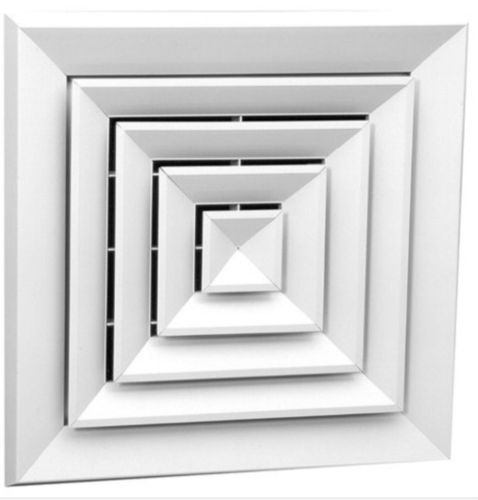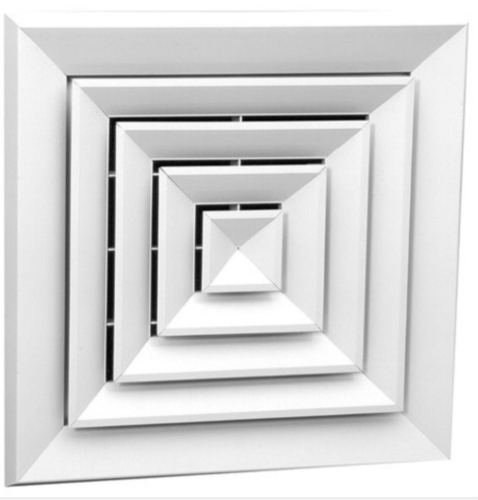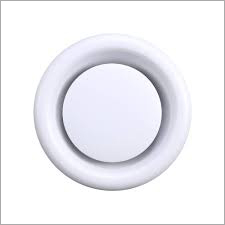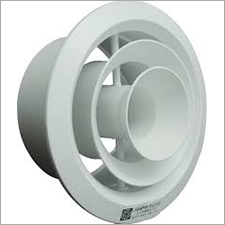Call: 08071931611
Collar Damper
Price 250-450 INR/ Set
MOQ : 10 Pieces
Collar Damper Specification
- Application
- Air Conditioning, Ventilation
- Automation Grade
- Manual
- Shape
- Circular
- Coverage Area
- Depends on Duct Size
- Technology
- Manual Air Regulation
- Accessories
- Collar Fittings, Screws
- Surface Finish
- Smooth, Anodized
- Features
- Lightweight, Corrosion Resistant, Easy Installation
- Noise Level
- Low
- Mounting Type
- Collar
- Material
- Aluminum
- Type
- Commercial
- Installation Type
- Duct Mounted
- Usage
- HVAC Ducts and Ventilation Systems
- Function
- Air Flow Regulation and Noise Reduction
Collar Damper Trade Information
- Minimum Order Quantity
- 10 Pieces
- Supply Ability
- 1 Piece Per Week
- Delivery Time
- 1 Week
- Sample Available
- Yes
- Sample Policy
- Free samples are available
- Main Domestic Market
- All India
About Collar Damper
Collar Damper is a crucial component of heating, ventilation, and air conditioning (HVAC) systems used to control the airflow in ductwork. It is a simple yet effective device designed to regulate or shut off the flow of air in specific sections of the ducts. Collar Dampers are commonly installed in various commercial and residential HVAC systems to enable precise control over airflow distribution, temperature, and ventilation in different zones or rooms, ensuring efficient and customizable climate control.
FAQ:
Q: How does a Collar Damper work?
A: Collar Damper is typically a circular or rectangular metal plate with a shaft or lever attached. It is installed in the ductwork and positioned in such a way that it can be manually adjusted or remotely controlled to open or close the airflow passage. When the damper is open, it allows air to flow freely through the ducts. Conversely, when it is closed, it restricts or stops the airflow, redirecting it to other areas or sections of the HVAC system.
Q: What is the purpose of a Collar Damper?
A: The primary purpose of a Collar Damper is to control and regulate the airflow in HVAC systems. By adjusting the damper's position, HVAC technicians or building occupants can balance the distribution of conditioned air, manage temperature variations in different zones, and improve overall energy efficiency. Collar Dampers also play a role in controlling ventilation and maintaining indoor air quality.
Q: Can Collar Dampers be manually operated?
A: Yes, many Collar Dampers are designed for manual operation. They typically have a lever or handle attached, allowing users to adjust the damper position by hand. Some dampers may also have an adjustable knob or screw that can be turned to open or close the damper.
Q: Are there motorized or automated Collar Dampers available?
A: Yes, motorized or automated Collar Dampers are available in more advanced HVAC systems. These dampers can be controlled remotely through a building automation system or a thermostat. Motorized Collar Dampers offer the advantage of precise and automated airflow control, making them ideal for larger or complex HVAC setups.
Reliable Air Flow Control for Commercial HVAC Systems
The Collar Damper delivers consistent and adjustable air regulation in HVAC ducts and ventilation networks. Engineered to minimize noise and enhance airflow efficiency, it excels in climate-controlled environments. Manufactured from corrosion-resistant aluminum, it remains robust under demanding conditions while maintaining a low noise profile.
Effortless Installation and Long-Term Durability
Designed for hassle-free installation, this collar damper includes compatible fittings and screws. The lightweight aluminum frame makes it easy to handle and mount, while its anodized finish protects against corrosion. With low maintenance needs and an expected life span beyond five years, it is a reliable choice for commercial applications.
FAQs of Collar Damper:
Q: How is the Collar Damper installed in HVAC duct systems?
A: The Collar Damper is mounted directly onto round HVAC ducts using the included collar fittings and screws. Its lightweight design and circular shape make it easy to position and secure during installation, typically requiring only basic hand tools.Q: What benefits does the aluminum extruded frame provide?
A: The aluminum extruded frame ensures the damper remains lightweight and highly resistant to corrosion, prolonging its operational life and maintaining smooth performance in various climate conditions.Q: Where can the Collar Damper be used?
A: This product is suitable for commercial HVAC systems, especially in air conditioning and ventilation ducts within offices, retail establishments, industrial buildings, and other environments requiring reliable air flow regulation.Q: What maintenance is required for the Collar Damper?
A: The Collar Damper requires minimal maintenance due to its durable construction and corrosion-resistant materials. Regular inspections and occasional cleaning are generally adequate to sustain optimal performance.Q: How does the damper contribute to noise reduction in ventilation systems?
A: By regulating airflow smoothly through the duct, the damper minimizes turbulence and vibrations, which helps lower noise levels in operating environments.Q: What is the process for manual air regulation using this damper?
A: Manual regulation involves adjusting the damper position within the duct using its built-in controls. This allows users to fine-tune airflow to desired levels, optimizing comfort or system performance as needed.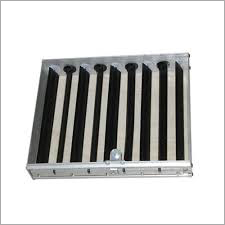
Tell us about your requirement

Price:
Quantity
Select Unit
- 50
- 100
- 200
- 250
- 500
- 1000+
Additional detail
Mobile number
Email
More Products in Air Diffuser Category
square Diffuser
Price 750-1250 INR / Set
Minimum Order Quantity : 10 Pieces
Type : Commercial
Material : Aluminum
Usage : Home, Restaurant, Office, Cleanroom
Height : 2 Inch (in)
Diffuser - Ceiling Diffuser
Price 950 INR / Set
Minimum Order Quantity : 1 Number
Type : Commercial
Material : Aluminum
Usage : Air Conditioning
Height : 595 Millimeter (mm)
Disc Valves Diffusers
Price 250-450 INR / Set
Minimum Order Quantity : 10 Pieces
Type : Commercial
Material : Aluminum
Jet Diffuser
Price 1200-1500 INR / Set
Minimum Order Quantity : 10 Pieces
Type : Commercial
Material : Aluminum
 Send Inquiry
Send Inquiry Send Inquiry
Send Inquiry
